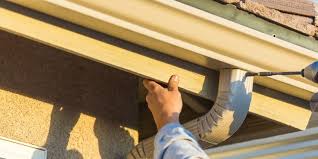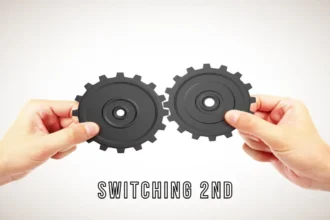Choosing the perfect radiator for your home isn’t just about picking something that looks nice against your wall. It’s about finding that sweet spot where comfort meets efficiency, where your living space stays cozy during the coldest months without sending your energy bills through the roof. Whether you’re renovating an older property, replacing an aging radiator, or adding heating to a new extension, selecting the right radiator can feel overwhelming with all the options available today.
But don’t worry, I’m here to simplify the process. After years of helping homeowners navigate the world of home heating, I’ve broken down the selection process into four straightforward steps that anyone can follow. No engineering degree required!
Step 1: Calculate Your BTU Output Needs
Before you start browsing radiator styles or comparing materials, you need to know one critical number: your required BTU output. BTU stands for British Thermal Unit, which is the standard measurement used to quantify heat output in radiators. Think of BTUs as your radiator’s heating power—the higher the number, the more heat it can produce.
Getting your BTU requirements right is absolutely essential. If your radiator’s output is too low, you’ll never achieve the comfortable temperature you want. If it’s too high, you’ll waste money on an unnecessarily large unit and end up with a room that overheats quickly.
Here’s a straightforward method to calculate your BTU needs:
1. Measure your room dimensions:
First, measure the length, width, and height of your room in feet.
2. Calculate the volume:
Multiply these three measurements together to get the room’s volume in cubic feet.
3. Apply the room-type multiplier:
Different rooms have different heating requirements:
- Living rooms, dining rooms: multiply by 5
- Bedrooms, home offices: multiply by 4
- Kitchens, hallways, other areas: multiply by 3
4. Adjust for other factors:
For north-facing rooms or rooms with many windows, add 15%. For well-insulated rooms, subtract 10%.
For example, if your living room measures 15 × 12 × 8 feet, your calculation would be: 1,440 cubic feet × 5 = 7,200 BTUs. If it faces north with large windows, add 15%: 7,200 × 1.15 = 8,280 BTUs.
Step 2: Choose the Type of Radiator You Want
Choose the radiator that will work best in your space. Today’s market offers a variety of styles to suit your heating needs and interior design preferences.
Panel Radiators
Panel Radiators are the most common type found in modern homes. They’re space-efficient with a slim profile, offer excellent heat output for their size, and are cost-effective. They work well in most rooms, particularly bedrooms and hallways where you want efficient heating without making the radiator a focal point.
Column Radiators
Column Radiators have seen a huge resurgence in popularity. With their classic, vertical columns, they offer a touch of vintage charm while providing excellent heating performance. They have a timeless aesthetic that works beautifully in period properties, excellent heat distribution due to their large surface area, and retain heat longer after your heating system turns off. They’re particularly effective in living rooms, dining rooms, and entrance halls.
Designer Radiators
Designer Radiators offer creative options that can serve as genuine focal points in a room. They come in stunning visual designs that can enhance your interior décor, unique shapes and patterns, and often double as mirrors or towel rails. They work particularly well in bathrooms, open-plan living spaces, and anywhere you want to make a design statement.
Step 3: Select the Right Material
The material of your radiator affects not only its appearance but also its performance. Different materials have distinct properties that influence heat output, efficiency, and longevity.
Aluminum Radiators
Aluminum Radiators are extremely lightweight, heat up very quickly, and offer excellent thermal conductivity for efficient heat transfer. They’re ideal for rooms you don’t use constantly, like home offices or guest bedrooms, where you want quick heat without waiting. However, they cool down quickly once your heating system turns off and are generally more expensive than steel options.
Steel Radiators
Steel Radiators offer a good balance of performance and affordability. They’re more affordable than other materials, have good heat retention properties, and are available in a wide range of styles and designs. They’re versatile all-rounders that work well in most rooms of your home, particularly family rooms and bedrooms.
Steel Radiators
Cast Iron Radiators offer classic styling and exceptional heat retention, continuing to radiate warmth long after your heating system turns off. They’re extremely durable and can last for decades with proper care. However, they’re very heavy, slow to heat up, and more expensive than steel options. Cast iron radiators are perfect for homes where heating runs on a regular schedule and for main living areas where constant, gentle heat is desired.
Step 4: Consider Installation and Compatibility
The final step is ensuring your new radiator will work seamlessly with your existing heating system and planning for proper installation.
Heating System
Heating System Compatibility is crucial. Most homes have wet central heating systems that circulate hot water through radiators, making most standard radiators compatible. If you have an older steam heating system, cast iron radiators are traditionally used but modern steel radiators can work with special valves. For homes without wet central heating, electric radiators offer a standalone solution.
Installation Cost
Professional installation Costs typically range between $200 and $500 per radiator, depending on complexity. While competent DIYers can replace radiators like for like, professional installation is recommended if you’re changing the radiator size or position, switching heating systems, or installing multiple radiators.
Positioning significantly impacts efficiency. Traditional wisdom suggests placing radiators under windows to counteract cold drafts. External walls are generally better than internal walls for heat distribution, and you should avoid positioning furniture directly in front of radiators, which blocks heat.
Maintaining Your Perfect Radiator
Once installed, proper maintenance ensures your radiator performs efficiently for years:
- Bleed radiators at least once a year to release trapped air
- Clean regularly to remove dust that reduces efficiency
- Consider an annual flush of your heating system to remove internal debris
Remember that investing time in selecting the right radiator pays dividends in comfort, efficiency, and visual appeal. A well-chosen radiator isn’t just a heating appliance; it’s an integral part of your home that contributes to both your comfort and your property’s value.
Whether you opt for the classic elegance of a cast iron column radiator, the sleek efficiency of an aluminum panel, or the striking statement of a designer model, your perfect radiator is out there. Armed with the knowledge from this guide, you’re now ready to make an informed choice that you’ll be happy with for years to come.

















